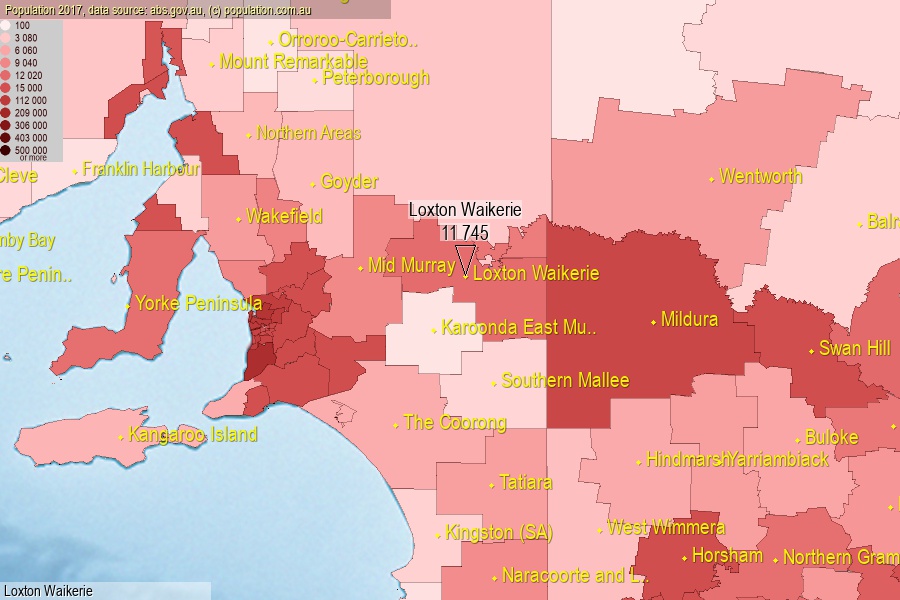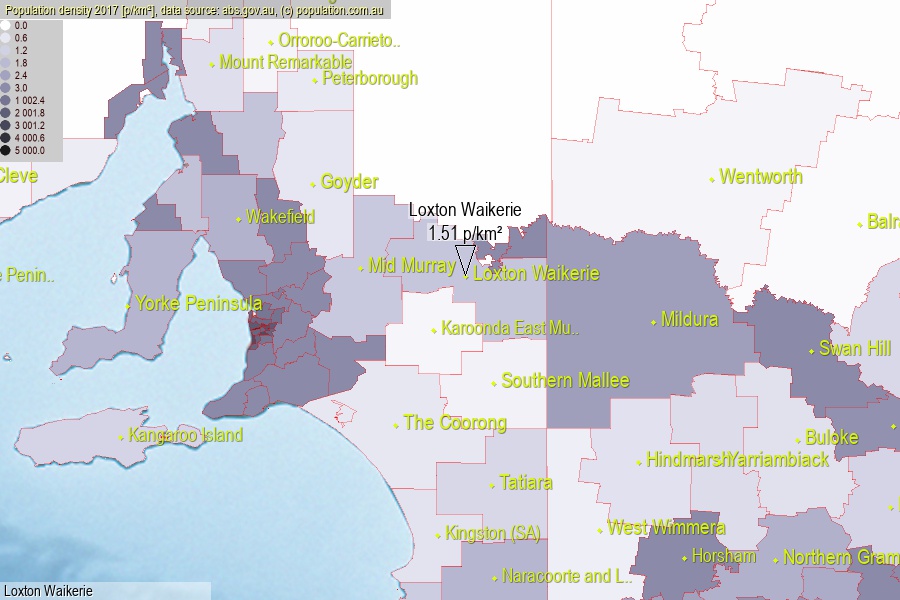 population.com.au
population.com.auLast official estimated population of Loxton Waikerie District Council (as Local Government Area) was 11 745 people (on 2017-06-30)[2]. This was 0.05% of total Australian population and 0.678% of SA population. Area of Loxton Waikerie is 7 763.90 km², in this year population density was 1.51 p/km² . If population growth rate would be same as in period 2016-2017 (+0.13%/yr), Loxton Waikerie population in 2025 would be 11 866. [0]



Click to enlarge. Loxton Waikerie is located in the center of the images.
Population [people], population density [p./km²] and population change [%/year] [2]
[1996-2001] -0.12 %/Y
[2001-2002] -0.21 %/Y
[2002-2003] -0.15 %/Y
[2003-2004] -0.59 %/Y
[2004-2005] -0.48 %/Y
[2005-2006] -1.01 %/Y
[2006-2007] -0.27 %/Y
[2007-2008] -0.83 %/Y
[2008-2009] -0.93 %/Y
[2009-2010] -0.87 %/Y
[2010-2011] -0.72 %/Y
[2011-2012] +0.29 %/Y
[2012-2013] +0.52 %/Y
[2013-2014] +0.86 %/Y
[2014-2015] +0.39 %/Y
[2015-2016] +0.12 %/Y
[2016-2017] +0.13 %/Y
[0] Calculated with linear interpolation from officially estimated population
[1] Read more about LGA and Australian Statistical Geography Standard (ASGS) on abs.gov.au
[2] Population data from Australian Bureau of Statistics (Population and density: 2017; change: 2016-2017)
[3] Digital Boundaries: Australian Statistical Geography Standard (ASGS) 2016.